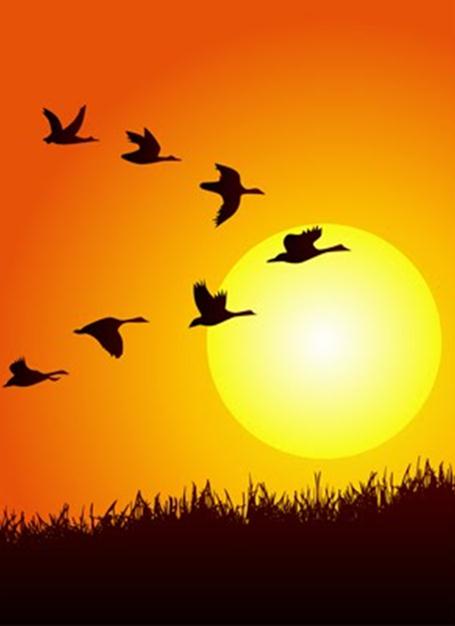Scientists may have solved the mystery of why so many birds fly in a V formation.
Scientists from the Royal Veterinary College fitted data loggers to a flock of rare birds that were being trained to migrate by following a microlight.
This revealed that the birds flew in the optimal position – gaining lift from the bird in front by remaining close to its wingtip.
The study, published in the journal Nature, also showed that the birds timed their wing beats.
A previous experiment in pelicans was the first real clue to the energy-saving purpose of V formations. It revealed that birds’ heart rates went down when they were flying together in V.
But this latest study tracked and monitored the flight of every bird in the flock – recording its position, speed and heading as well as every wing flap.
This was possible thanks to a unique conservation project by the Waldarappteam in Austria, which has raised flocks of northern bald ibises and trained them to migrate behind a microlight.
The aim of this unusual project is to bring the northern bald ibis back to Europe; the birds were wiped out by hunting, so the team is retraining the birds to navigate a migration route that has now been lost.
Fitting tiny data loggers to these critically endangered ibises showed that the birds often changed position and altered the timing of their wing beats to give them an aerodynamic advantage.

Lead researcher Dr. Steven Portugal explained: “They’re seemingly very aware of where the other birds are in the flock and they put themselves in the best possible position.”
This makes the most of upward-moving air generated by the bird in front.
This so-called “upwash” is created as a bird flies forward; whether it is gliding or flapping, it pushes air downward beneath its wings.
“Downwash is bad,” explained Dr. Steven Portugal.
“Birds don’t want to be in another bird’s downwash as it’s pushing them down.”
But as the air squeezes around the outside of the wings, it creates upwash at the wingtips.
“This can give a bit of a free ride for the bird that’s following,” said Dr. Steven Portugal.
“So the other bird wants to put its own wingtip in the upwash from the bird in front.”
The other really surprising result, the researchers said, was that the birds also “timed their wing beats perfectly to match the good air off the bird in front”.
“Each bird [kept] its wingtip in the upwash throughout the flap cycle,” Dr. Steven Portugal explained.
Just as the birds save energy by gaining lift from other birds, many companies that are developing unmanned aerial vehicles, or UAVs, are looking to copy the energy-efficient V formation.
“Elucidating this mechanism might go some way to helping [companies] understand how they can replicate that with their plane formation to save fuel,” said Dr. Steven Portugal.
[youtube zkEvEWX9KG8 650]
